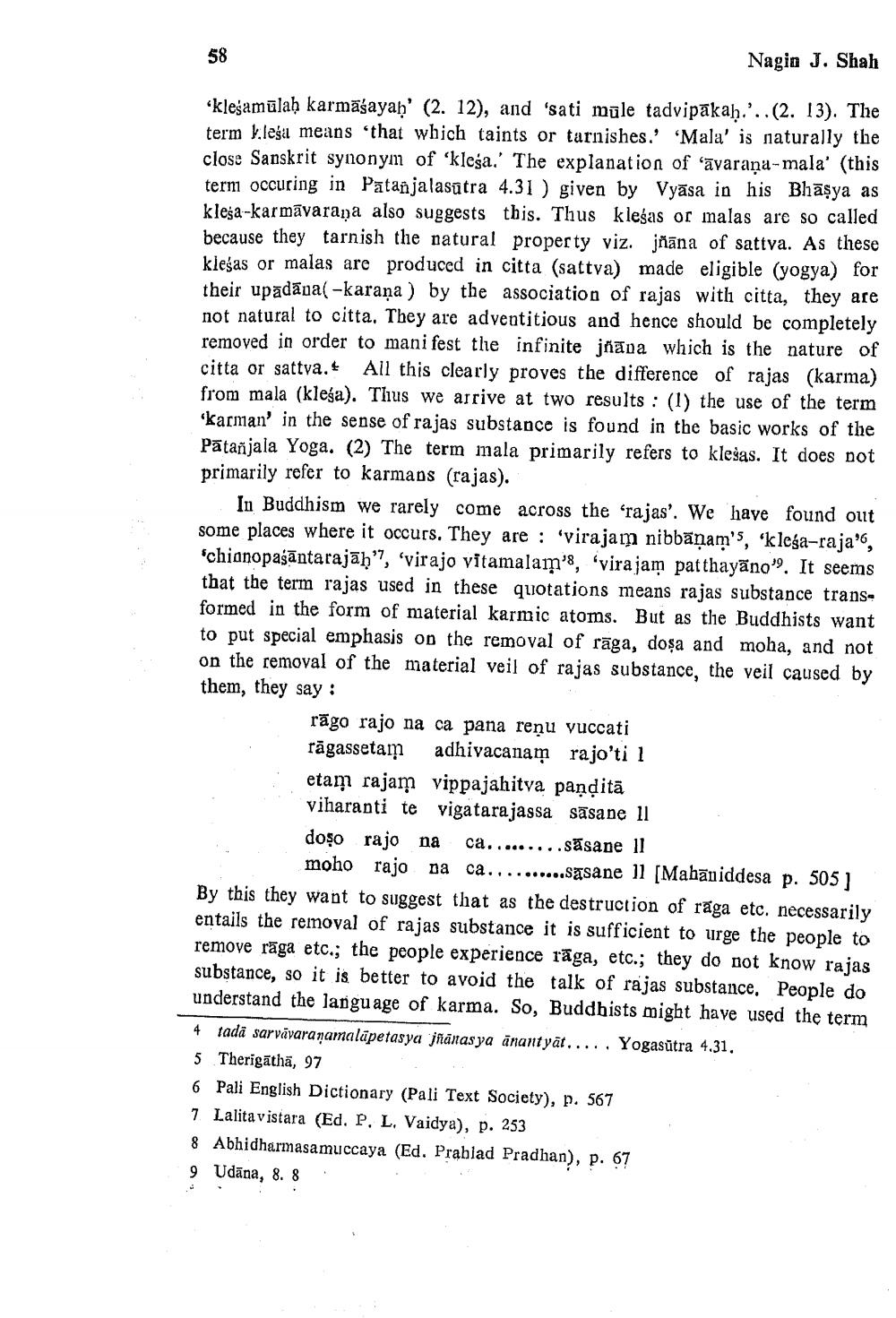________________
58
Nagin J. Shah
klešamulah karmaşayan' (2. 12), and 'sati mule tadvipakah.'..(2. 13). The term kleša means that which taints or tarnishes.' 'Mala' is naturally the close Sanskrit synonym of 'klega.' The explanation of avaraņa-mala' (this tern occuring in Patanjalasatra 4.31 ) given by Vyāsa in his Bhāşya as klesa-karmāvaraya also suggests this. Thus klegas or malas are so called because they tarnish the natural property viz. jñāna of sattva. As these klešas or malas are produced in citta (sattva) made eligible (yogya) for their upādāua(-karaṇa) by the association of rajas with citta, they are not natural to citta. They are adventitious and hence should be completely removed in order to mani fest the infinite jñāna which is the nature of citta or sattva. All this clearly proves the difference of rajas (karma) from mala (klesa). Tlius we arrive at two results : (1) the use of the term *Karman' in the sense of rajas substance is found in the basic works of the Pātañjala Yoga. (2) The term mala primarily refers to klesas. It does not primarily refer to karmaps (rajas).
In Buddhism we rarely come across the 'rajas'. We have found out some places where it occurs. They are : 'virajam nibbānam's, 'klega-raja', 'chionopašāntarajāh', 'virajo vitamalam', 'virajam patthayāno". It seems that the term rajas used in these quotations means rajas substance transformed in the form of material karmic atoms. But as the Buddhists want to put special emphasis on the removal of rāga, dosa and moha, and not on the removal of the material veil of rajas substance, the veil caused by them, they say :
rāgo rajo na ca pana reņu yuccati rāgassetam adhivacanam rajo'ti 1 etam rajam vippajahitva paņditā viharanti te vigatarajassa sāsane 11 doso rajo na ca......... sāsane II
moho rajo na ca..........sasane l (Mahāniddesa p. 505] By this they want to suggest that as the destruction of rāga etc. necessarily entails the removal of rajas substance it is sufficient to urge the people to remove rāga etc.; the people experience rāga, etc.; they do not know rajas substance, so it is better to avoid the talk of rajas substance, People do understand the language of karma. So, Buddhists might have used the term 4 tadā sarvävaranamalõpetasya jñanas ya anantyāt..... Yogasūtra 4.31, 5 Therigātha, 97 6 Pali English Dictionary (Pali Text Society), p. 567 7 Lalita vistara (Ed. P. L. Vaidya), p. 253 8 Abhidharmasamuccaya (Ed. Prablad Pradhan), p. 67 9 Udāna, 8.8 .




